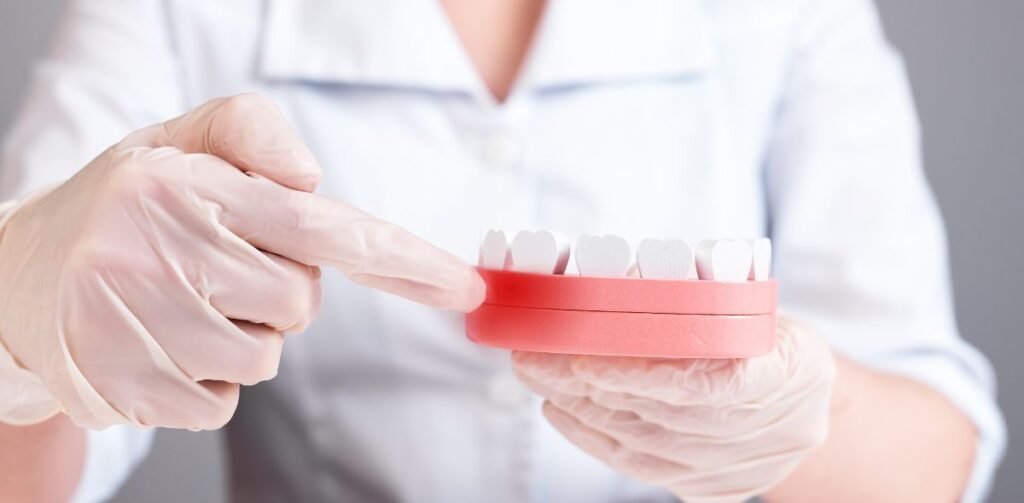Reversible Pulpitis and Irreversible Pulpitis: Causes, Symptoms, and Treatments

Dive into the intricate realm of dental health as we explore “Reversible Pulpitis and Irreversible Pulpitis: Causes, Symptoms, and Treatments.” Unveiling the mysteries of these two conditions, this article delves into the root causes, distinct symptoms, and effective treatments. Whether you’re grappling with dental discomfort or seeking to broaden your oral health knowledge, this exploration promises insights into the nuanced world of reversible and irreversible pulpitis.
What Is Pulpitis?
Pulpitis, a dental woe, arises when the dental pulp, the tooth’s inner core housing nerves and blood vessels, becomes inflamed. This condition, marked by discomfort, results from diverse causes. Whether spurred by cavity invaders, dental mishaps, or post-treatment complications, pulpitis is a common dental concern. This inflammation triggers pain and sensitivity, necessitating prompt attention for relief. Understanding the roots of this discomfort is key to addressing it effectively and preserving dental well-being. In essence, pulpitis puts the spotlight on the tooth’s core, reminding us of the importance of dental care.
Causes of Pulpitis
- Cavity: The development of cavities is a common trigger for pulpitis. When bacteria infiltrate the tooth, they can lead to infection and subsequent inflammation of the pulp.
- Dental Trauma or Injury: Physical trauma or injury to the teeth can also cause pulpitis. Accidents or blows to the face may damage the pulp, initiating the inflammatory response.
- Pulpitis after a Dental Procedure: Some individuals may experience pulpitis as a complication of dental procedures. This could be due to various factors, such as an improper restoration or an infection introduced during the treatment.
- Grinding or Clenching Your Teeth: Habitual teeth grinding or clenching can contribute to pulpitis over time. The constant pressure on the teeth may lead to inflammation of the pulp.
- Cracked or Broken Tooth: A cracked or broken tooth can expose the pulp to external irritants, leading to inflammation. This can occur from accidents, biting on hard objects, or other forms of dental trauma.
Types of Pulpitis
Understanding the types of pulpitis is crucial for proper diagnosis and treatment. There are two main categories: reversible and irreversible pulpitis.
- Reversible Pulpitis: Reversible pulpitis is an early stage where inflammation can be halted, and the pulp can heal with appropriate intervention. The condition is manageable, and symptoms may subside with the right dental care.
- Irreversible Pulpitis: Irreversible pulpitis indicates a more advanced stage where the inflammation is severe, and damage to the pulp is irreversible. Treatment options may include root canal therapy or tooth extraction.
Pulpitis Symptoms

Pulpitis symptoms manifest as signals of dental distress. For reversible pulpitis, expect sensitivity to hot or cold, discomfort while chewing, and pain subsiding post-stimulus. Irreversible pulpitis signals more severe issues, presenting as intense, lingering pain, spontaneous discomfort, and gum tenderness. Recognizing these pulpitis symptoms is crucial, guiding timely intervention. If you’re experiencing these signs, seeking prompt dental care is paramount for a proper diagnosis and effective treatment, steering you toward relief and preserving your dental well-being.
Reversible Pulpitis Symptoms
Reversible pulpitis symptoms unfold as indicators of manageable dental distress. Individuals may notice heightened sensitivity to hot or cold temperatures, coupled with discomfort while chewing. A distinctive trait is experiencing pain that eases once the triggering stimulus is removed. These symptoms signal an early stage where intervention can halt progression. Recognizing these cues prompts timely dental care, offering the prospect of resolution and a return to oral comfort.
- Sensitivity to hot or cold temperatures
- Discomfort while chewing
- Pain that subsides after the stimulus is removed
Irreversible Pulpitis Symptoms
Irreversible pulpitis symptoms are crucial signals of advanced dental distress. Individuals may endure intense, lingering pain, a distinctive characteristic of this stage. Spontaneous pain without external stimuli becomes pronounced, indicating severe inflammation. Additionally, swelling or tenderness in the surrounding gums may be observed. Recognizing these important irreversible pulpitis symptoms is vital for seeking immediate dental attention.
- Intense, lingering pain
- Spontaneous pain without external stimuli
- Swelling or tenderness in the surrounding gums
Pulpitis Treatment
When it comes to addressing pulpitis, understanding the importance of tailored treatment is key. If you encounter pulpitis at night, home-based treatments become crucial until professional help is available. Over-the-counter pain medication aids in pain relief and inflammation reduction. Propping your head up on pillows minimizes inflammation buildup, while an ice pack can alleviate swelling. Distinguishing between reversible and irreversible pulpitis determines the appropriate treatment. The significance of pulpitis treatment lies in timely and suitable interventions, ensuring relief and safeguarding dental well-being.

Reversible Pulpitis Treatment
Early intervention is key, and treatment may involve addressing the underlying cause, restoring cavities, or using desensitizing agents. In some cases, a dental crown may be recommended for added protection.
Irreversible Pulpitis Treatment
Advanced cases may require root canal therapy to remove the infected pulp and preserve the tooth. In severe situations, tooth extraction might be the only viable option.
Preventing Pulpitis
Preventing pulpitis is an essential focus for maintaining optimal oral health. Adopting simple yet vital practices can significantly reduce the risk of this dental concern. Regular dental check-ups from your dentist play a pivotal role, allowing for the early detection of potential issues. Consistent and thorough oral hygiene, including brushing and flossing, is vital in preventing pulpitis. Promptly addressing cavities and dental concerns as they arise is equally important. The significance of preventing pulpitis lies in these routine measures, ensuring a proactive approach to dental well-being and minimizing the chances of discomfort.
Consult With Your Dentist
If you’re experiencing symptoms like persistent toothache, sensitivity to hot or cold, and swelling around the tooth, it’s crucial to consult with a dentist, especially if you suspect pulpitis. Seeking prompt dental care is essential to address the inflammation of the dental pulp. For residents in Rocklin, CA, finding a reliable dentist is key to managing and treating pulpitis effectively. Schedule a visit with a qualified dentist in Rocklin, CA, to receive the appropriate diagnosis and tailored treatment for your dental concerns. Remember, early intervention is key to maintaining optimal oral health.
Conclusion
In conclusion, navigating the landscape of dental health is paramount for overall well-being. This article about reversible pulpitis and irreversible pulpitis and their causes, symptoms, and treatments sheds light on the intricacies of these conditions, emphasizing the importance of timely intervention. Recognizing symptoms, understanding causes, and embracing tailored treatments are pivotal steps toward maintaining a healthy smile. By staying informed and proactive, individuals can ensure a journey towards optimal dental health, mitigating the impact of reversible and irreversible pulpitis on their well-being.


